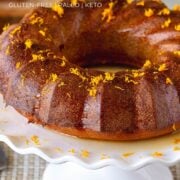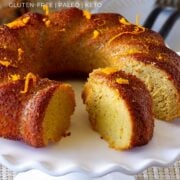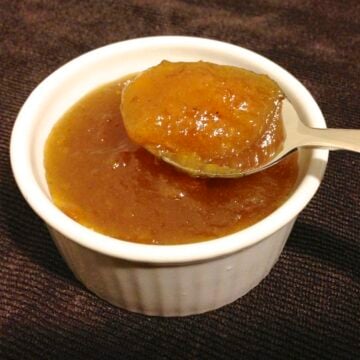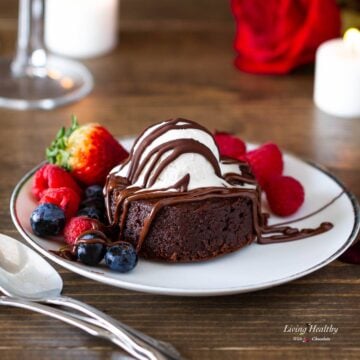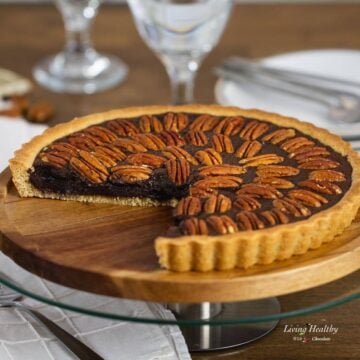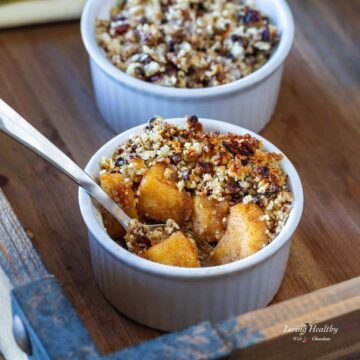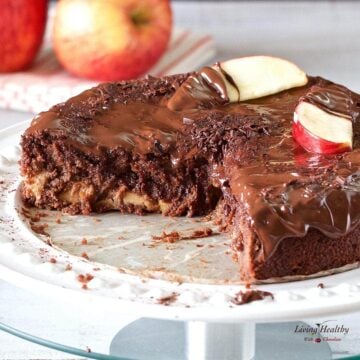With its outstanding orange flavor, moist tender crumbs, and zesty orange glaze, this is truly one of the best healthy Orange Cake recipes made with fresh orange juice and coconut flour. And after you try it, you'll see how delicious and easy it is to make.
Love orange cake? Check out my marbled Chocolate Orange Cake while you're here!
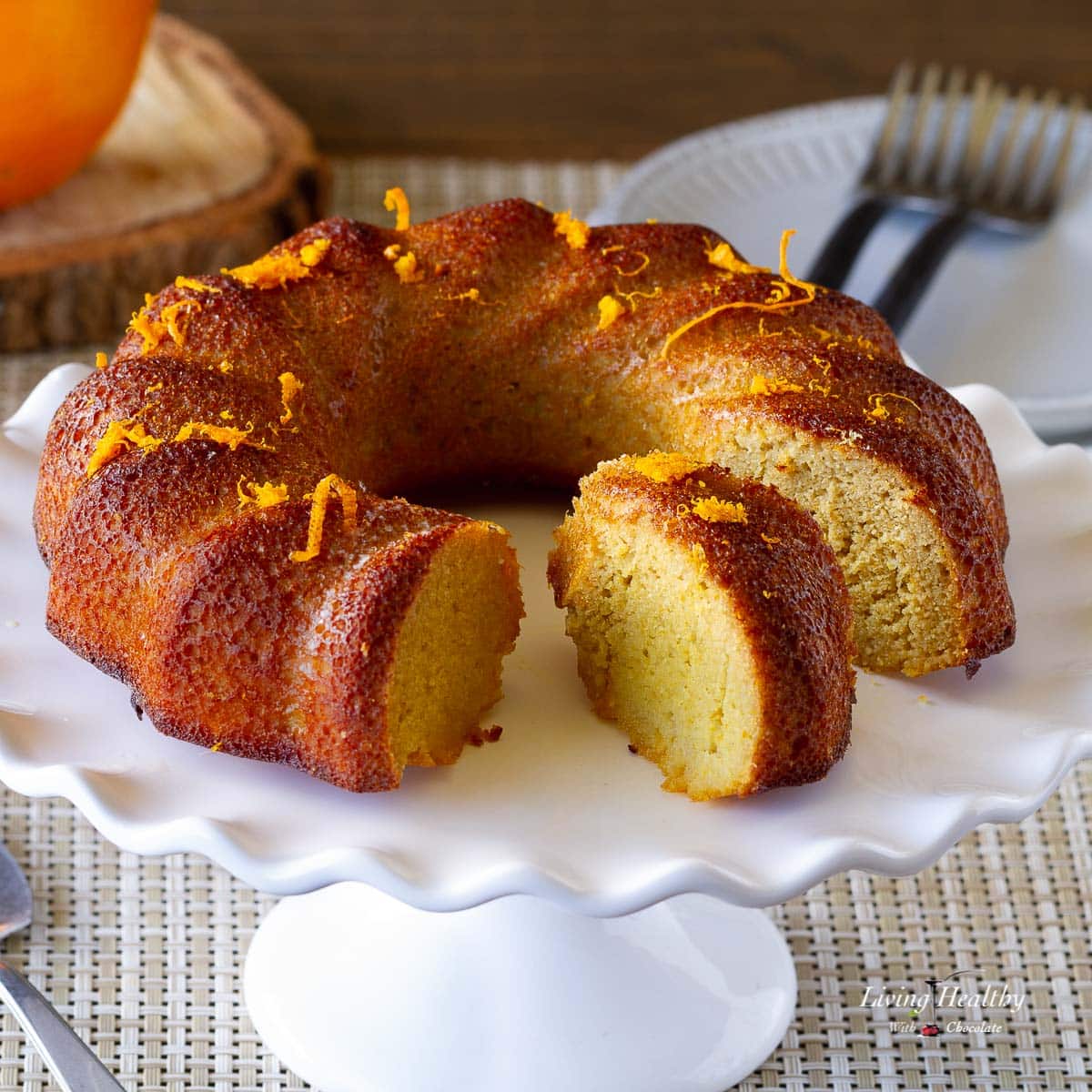
About this recipe
Today you'll be giving old fashioned orange cake a makeover so that it is more moist, orangey, healthier and easier to make from scratch. And you'll be using a whole orange to deepen the fresh fruity taste of the cake.
First, orange zest is added in the batter and after baked, the cake is soaked in freshly squeezed orange juice and then glazed with a lightly sweetened orange glaze.
Everyone can enjoy this orange cake recipe because it is Paleo, gluten free and low carb - made with coconut flour and coconut oil. It's perfect for dessert or even breakfast, because you'll be replacing the processed flours and sugars with healthy ingredients.
Taste, Texture & Ease
Taste: Bright and refreshing! It's sweet, but not too sweet, and the orange glaze drizzled on top gives it a delightfully fresh and slightly sweeter orange flavor. And although this cake is made with coconut products, orange is still the dominant flavor that shines through.
Texture: You will find that this cake is fluffier, more tender, lighter and much more moist than typical cakes baked with coconut flour. One reason for that is because the natural sugars found in orange juice play a significant role in tenderizing the crumbs.
Ease: We have a simple orange cake recipe on our hands that is easy to prepare in just about 15 minutes. And the great news is that there's no special equipment or complicated assembly and decoration required. It's a great recipe to make with the kids.
Ingredients you'll need
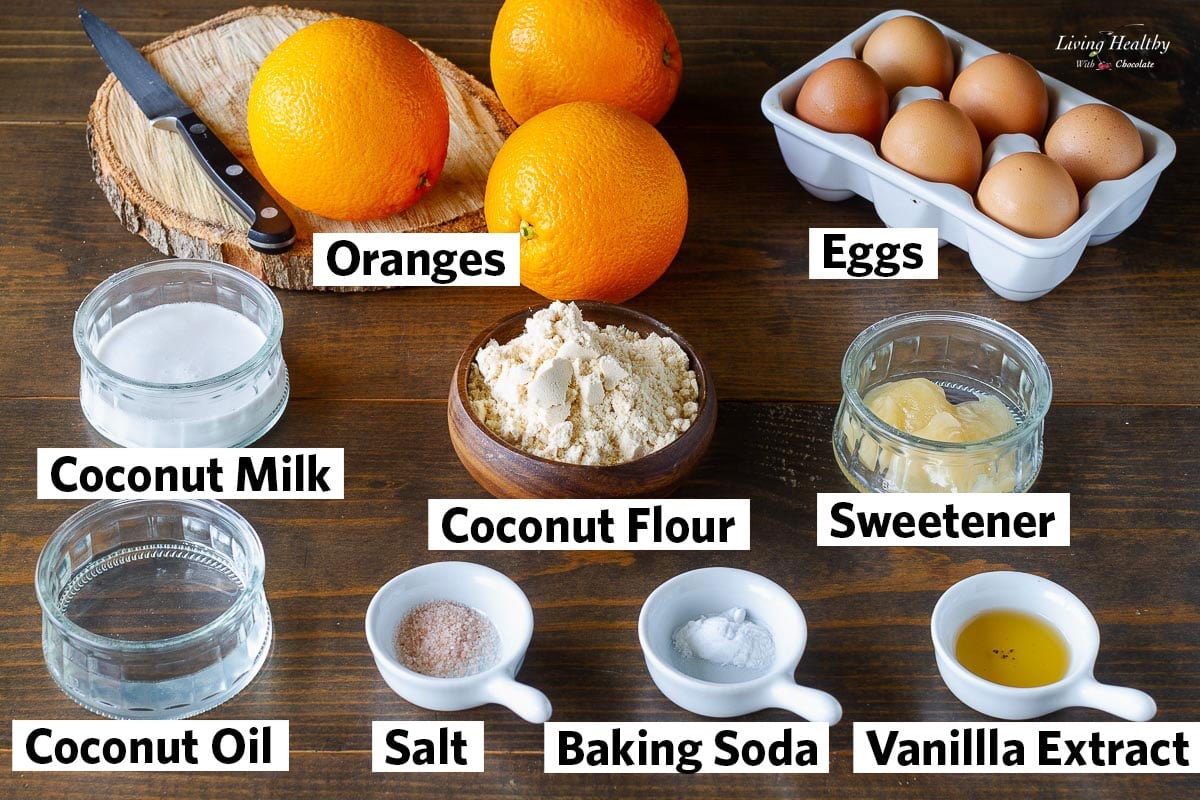
As you can see, this recipe for orange cake comes together with just 9 ingredients and orange is the shining star. But here's how they all work together to make a moist gluten-free orange cake:
- Orange: You'll be using fresh oranges and soaking the cake with fresh orange juice to add a citrusy flavor and to make it even more moist. In addition, the zest which contains the flavorful citrus oils, is mixed in the batter to create a dimensional orangey flavor.
- Coconut flour: To make it Paleo and gluten-free, you'll replace all-purpose flour with coconut flour. And because coconut flour is very absorbant, only a small amount is needed so the cake is not dry and crumbles apart.
- Eggs: Because this recipe is made with coconut flour, eggs are an essential addition. They make the cake more moist, lighter, softer and fluffier, also giving structure and rise. But don't worry because this cake does not taste eggy!
- Coconut milk & coconut oil: Making this coconut flour cake dairy-free and without butter is only possible because of the coconut milk and coconut oil. These are two important fats helping to balance the moisture content in the batter.
- Honey & vanilla extract: No one wants a blend dessert so the honey and vanilla bring all the flavors together. Very little honey is added, but if you're diabetic or Keto you can substitute it for a low-carb sweetener such as Lakanto Sugar Free Maple Syrup.
How to make orange cake
The method used for this recipe is quite simple with the bonus that it doesn't require any special equipment - just a bowl and a blender which is optional (see baking tips for other options). Below is step-by-step overview with photos to guide you along, but be sure to watch the recipe video.
- Zest: Begin by zesting a large orange into a blender. I love that zester tool you see me using in the photo - it zests the peel super fast!
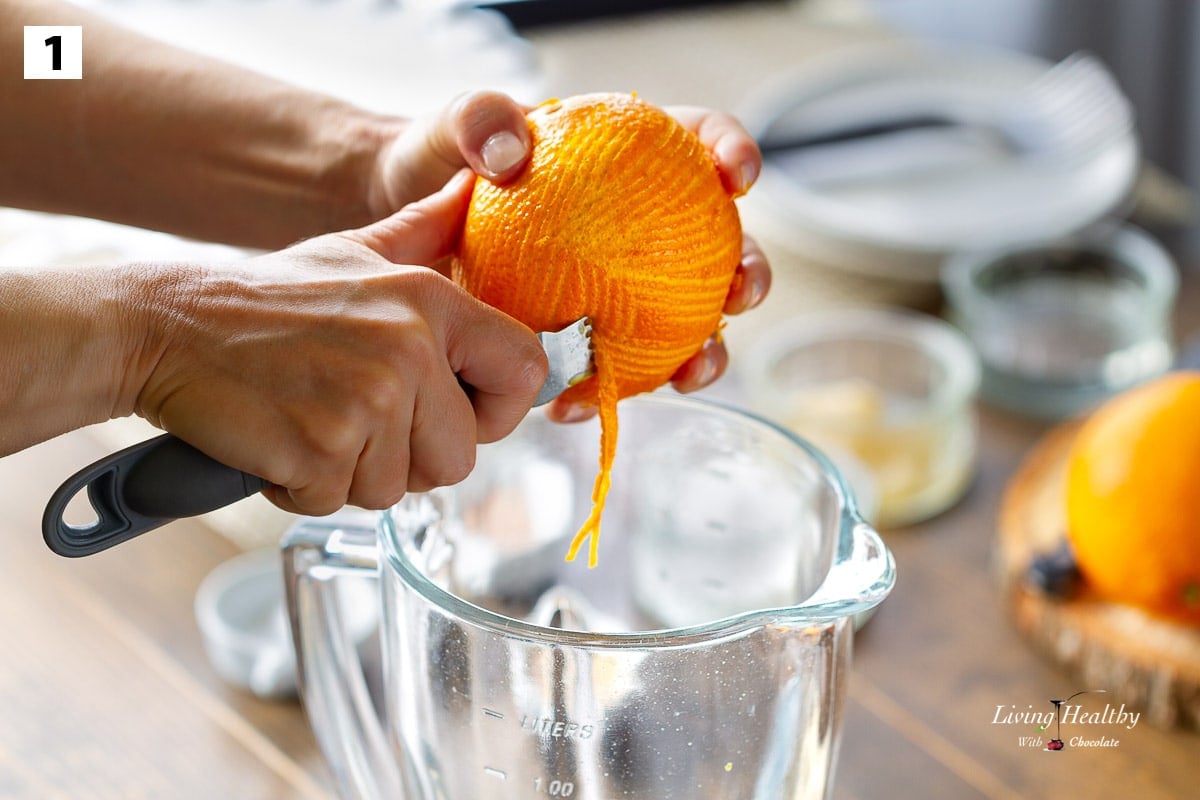
- Wet ingredients: Next add all of the wet ingredients (milk, oil, honey, vanilla and eggs) to the blender. Blend for 10 to 20 seconds to incorporate a lot of air in the mixture so that your cake comes out lighter.
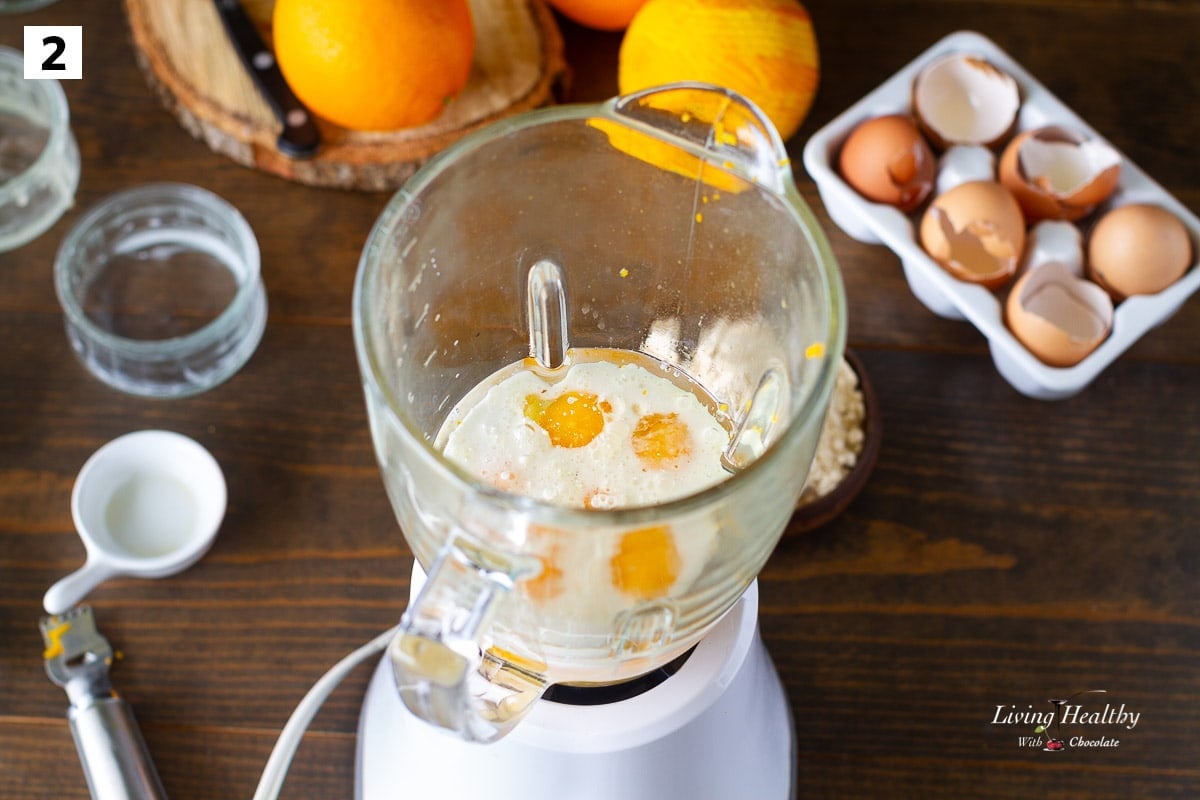
- Dry ingredients: In a medium bowl, use a spatula to mix together the coconut flour, baking soda and salt. Or use a fine mesh sieve to sift the ingredients into the bowl.
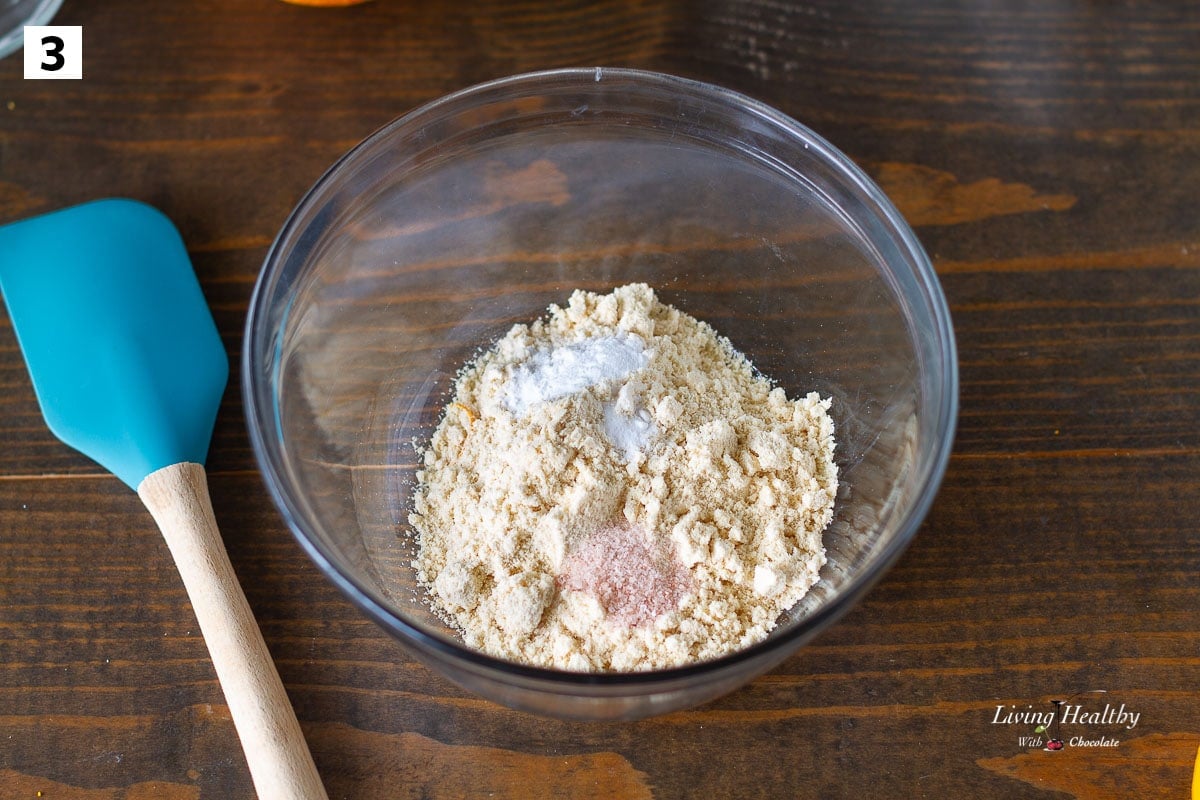
- Mix wet and dry ingredients: Pour the wet ingredients in the blender into the bowl with the coconut flour. Then gently mix with your spatula to form the batter.

- Fill pan & bake: Pour the batter into your cake pan. Give it a tap on the counter to distribute the batter evenly on the bottom. Also clean any spills so they don't burn during baking. Then, bake in a preheated oven to 350°F for about 32 minutes or until a skewer inserted into the center comes out clean.

- Juice: While your cake is baking, juice one whole large orange. After baked, set the pan over a cooling rack and while its still warm, poke a few holes throughout the entire cake and pour the juice over it. Let it sit in the pan for a few minutes to absorb the juice.
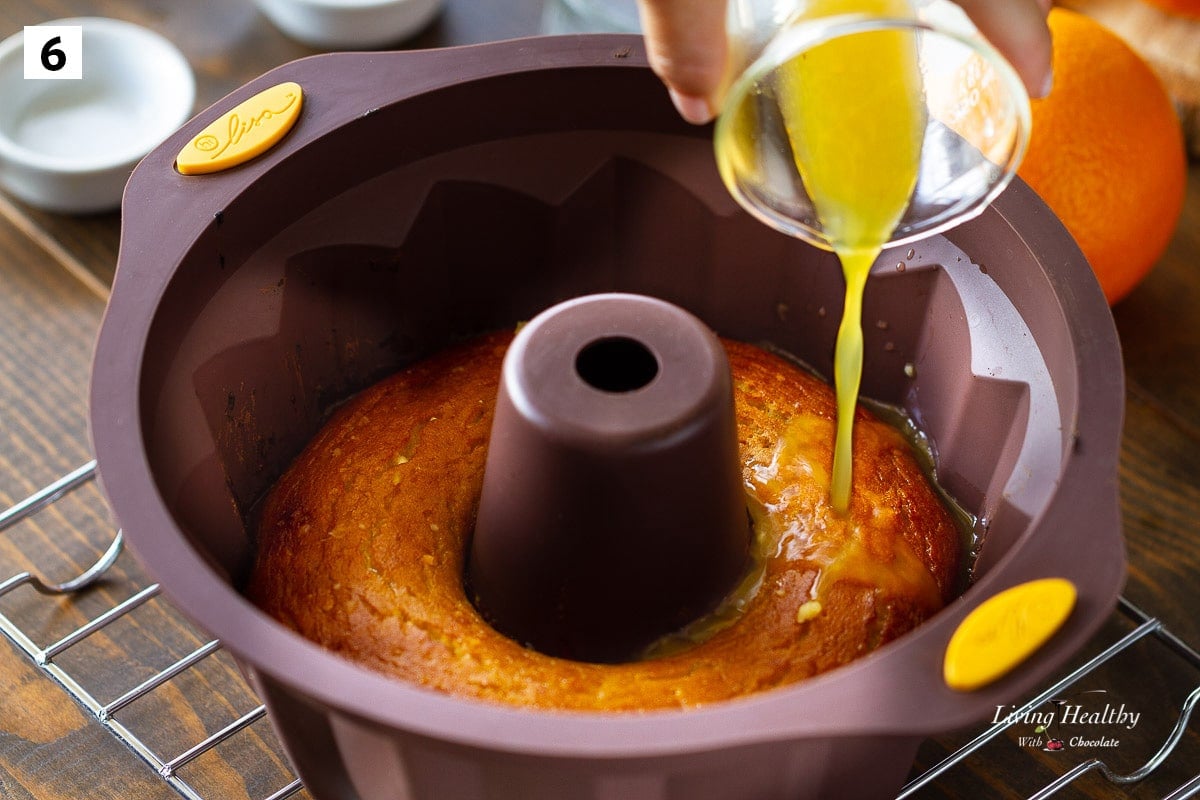
Making the orange glaze
This orange juice cake is even better finished with a lightly sweetened glaze that bumps up its overall sweetness, moisture and bright citrus flavor. It's easy to make! And since this is a healthy cake recipe, you'll be making a honey-orange glaze instead of a sugar-filled, super sweet glaze.
So in a cup, simply whisk together honey and orange juice until the honey dissolves. Plate your cake, poke a few holes on top with a skewer or fork. Then drizzle the glaze all around it, finishing it off with a sprinkle of zest on top.
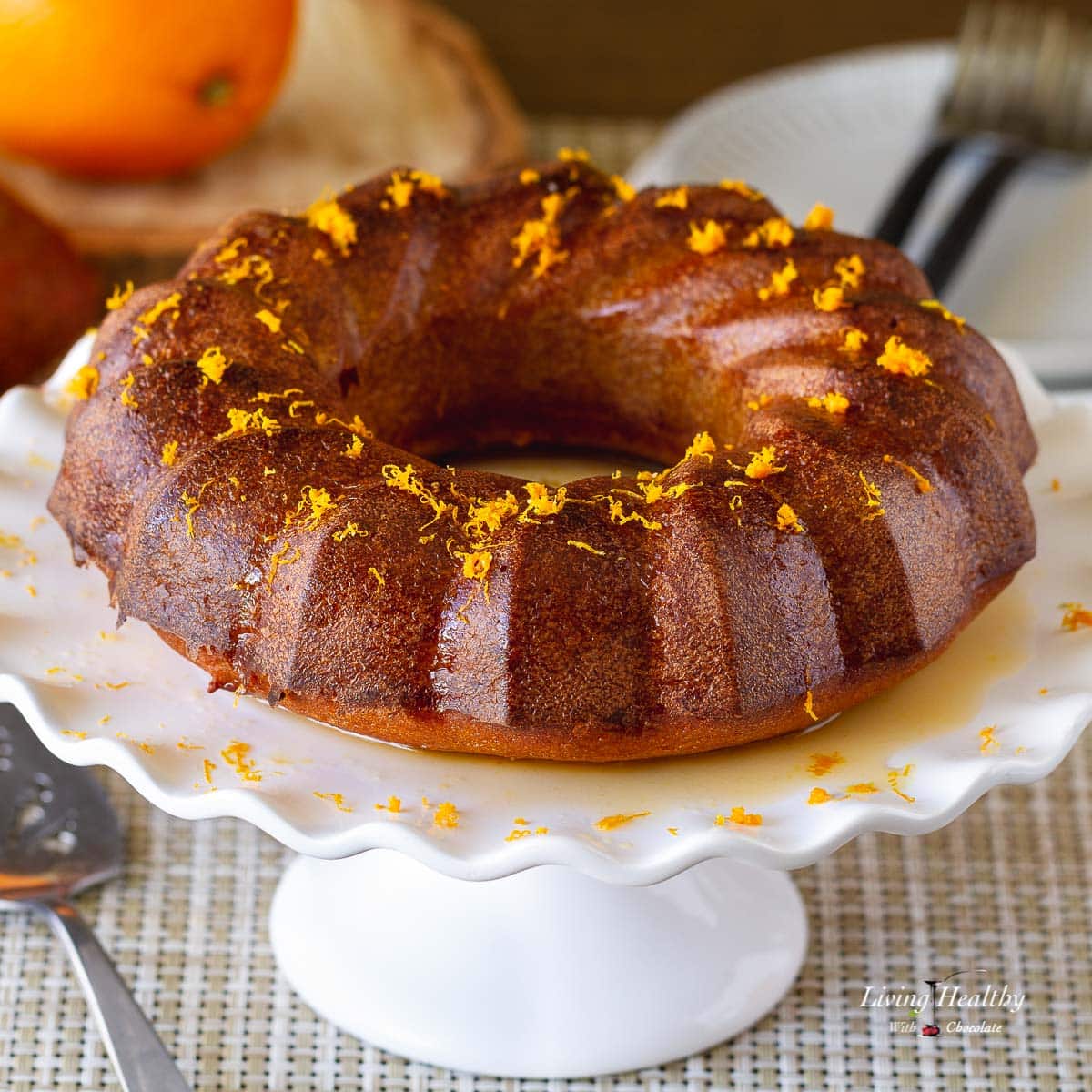
Do you put the glaze on warm cake? It really doesn't matter if it is glazed warm, but I think that when warm it absorbs the glaze better.
How do you thicken this orange glaze? You can reduce it on the stove at low heat to caramelize the sugars. If using this method, you may need to double or triple the amounts added to make enough. Or you can add a Paleo thickening agent like arrowroot or gelatin.
Choosing your cake pan
As you can see in my photos and recipe video, I chose to bake this as an orange bundt cake and I used a silicone bundt mold. I think this mold is super cute and fits the style of this cake perfectly.
However, the batter will fit into any 6 to 8-inch bundt mold or loaf pan, or a round or square cake pan. And you can even bake it as muffins in a standard muffin pan! Baking times may very between pans. So the best way to test for doneness is by inserting a toothpick in the center. When it comes out clean baking is done.
💡 Tip
You can usually tell when baking is close to being done when your house starts to smell like freshly baked cake and the tops start to turn brown. And although this isn't a great concern with grain-free baking, I still try not to open the oven door until then.
Note: If you're not a using a silicone mold, you will need to grease your pan to prevent it from sticking. Grease it with just coconut oil, it works great!
Types of oranges you can use
What types of oranges can I use to make orange cake? I often bake this cake with Navel oranges which are readily available, and are sweet and slightly bitter. Or I use whatever types are locally in season and blooming here in Hawaii.
You really can make this cake and the glaze with any type of oranges, including Sicilian blood oranges and mandarins. And if your orange is not very sweet you can adjust how much sweetener you add.
What oranges are best for juicing, snacking on or baking with? You can bake with any type, but here's a helpful chart to further guide you with your choice.
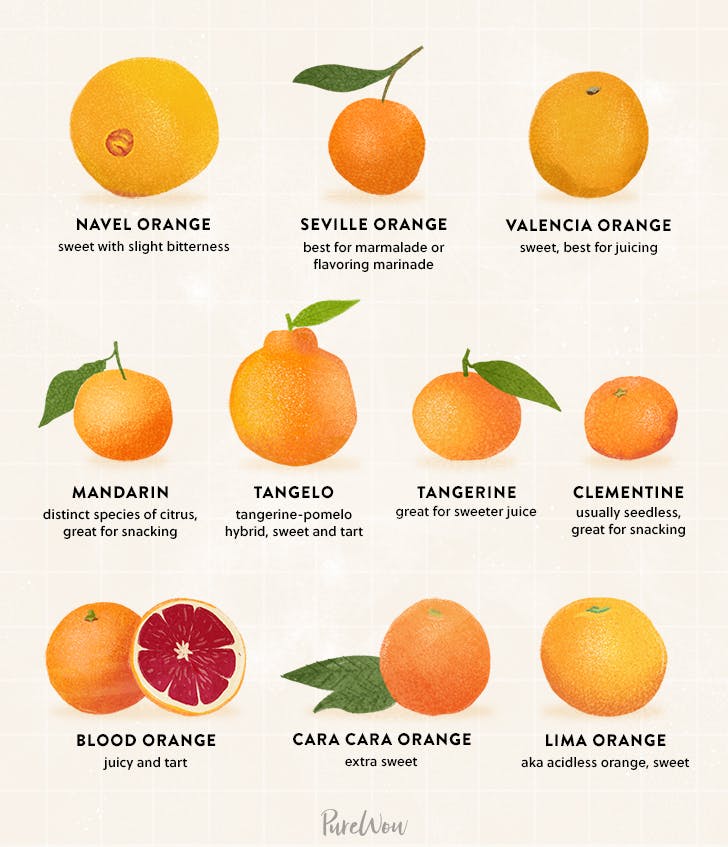
Photo credit: Purewow.
Can I use bottled orange juice instead of fresh juice for the glaze?
I highly recommend using fresh oranges in this recipe. Freshly squeezed orange juice is not pasteurized and tastes so much better.
And you need to add the zest of an orange in the batter anyway, so use the zest from the same oranges you use for juicing. And here's a tip, it's easier to zest the orange before juicing it.
How to decorate it
Here are some more ideas for glazing and decorating your cake.
- Orange-honey glaze: Pictured in this post, the lightly sweetened glaze with sprinkles of orange zest looks simple while driving loads of citrus flavor. Decorated it further by adding thin slices of fresh oranges around the cake.
- Caramel: Drizzle top with a layer of homemade caramel sauce and let it drip elegantly down the sides for a sweeter caramelized dessert.
- Rich Chocolate Fudge: Chocolate lovers! Frost it with this healthy Chocolate Fudge Sauce made with 100% dark chocolate and raw cacao powder.
- Coconut glaze: Make a simple unsweetened coconut milk glaze to drizzle over it and give it a white sugary glaze look.
- Coconut Lemon Glaze: Want more citrus flavor? Try topping your cake with this refreshing Coconut Lemon Glaze I use to glaze my Lemon Brownies.
Can orange cake be frozen
Absolutely! If you end up having left overs and want to freeze your cake, place it in an airtight container or ziplock bag and freeze it. When ready to eat again, let it thaw and come to room temperature.
Additionally, you can store your cake in the fridge for about 3 weeks or 1 week at room temperature.
Baking tips
- How can I intensify the orange flavor of this cake? Add more zest to the batter! You'll be zesting one large orange here, but for a stronger flavor add the zest of two oranges.
- I don't have a blender, what else can I use? No blender, no problem! Whisk your ingredients in a bowl using a whisk or fork until foamy. Or use a food processor, handheld or stand mixer to mix the ingredients.
- Can I double the recipe? Yes! This recipe it's very versatile and easy to make a larger cake by doubling or tripling the amounts in the recipe.
- Use a scale. Baking can sometimes be challenging especially if coconut flour is used, but measuring your ingredients by weight using a scale will help you get the best results.
- Use eggs at room temperature. These will mix better with the batter and rise more easily. It's easy to warm up fridge cold eggs, just submerge in warm water for around 5 minutes.
🙋♀️ FAQs
Substituting coconut flour for almond flour is tricky and often times requires a lot of testing to get the final texture right. I don't recommend it unless you want to have fun experimenting in the kitchen. If you're wanting to make an orange cake with almond flour, try making my Mable Orange Cake omitting the chocolate completely.
I absolutely do not recommend making this orange cake without eggs. Because we're baking with coconut flour, we need to add eggs to make the cake lighter and more moist.
I know a lot of you love Olive Oil Orange Cake! I do too, but... Olive oil has a very distinct taste especially if it's cold-pressed, virgin olive oil. With that said, you can substitute it for the coconut oil in this recipe but you may want to add more sweetener to balance out the flavors.
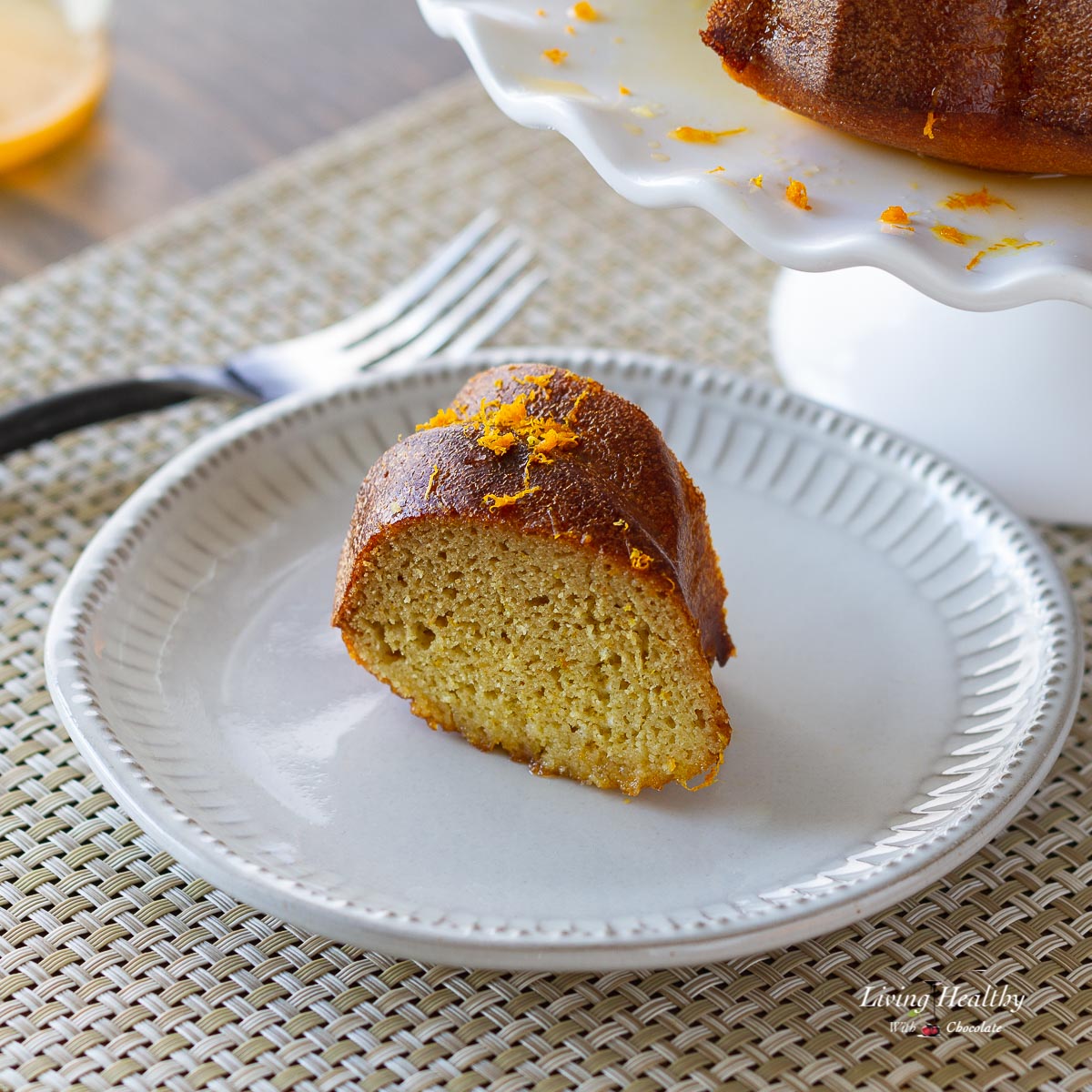
More orange recipes
Looking for more healthy dessert recipes with oranges? Here are some other great ideas.
And with all that - I'm finally done. This cake lasts about one afternoon in my house when I make it. It is so moist and delicious!
I've always loved orange cakes so much that this is one of my first attempts creating healthier cakes back in 2012. It is about time I updated this recipe and shared it with you! Here's the original photo I took of it 😱

And now it's all over to you - tell me what you think! - Adriana 🧡
Like this recipe? Subscribe to my newsletter for email updates, and follow along on YouTube, Instagram, Facebook and Pinterest for all of the latest updates.
Recipe video
Recipe
Coconut Flour Orange Cake
Ingredients
Cake
- 1 large orange
- ¼ cup (45g) coconut oil, melted
- ¼ cup (54g) full fat coconut milk
- 2 tablespoons (46g) raw honey, or another liquid sweetener
- 6 large eggs, room temperature
- 1 teaspoon (4g) vanilla extract
- ½ cup (60g) coconut flour
- ½ teaspoon (2g) baking soda
- ½ teaspoon fine himalayan salt
Orange Glaze (optional)
- 1 tablespoon (22g) raw honey
- 1 tablespoon (13g) fresh orange juice
- 1 tablespoon orange zest
Instructions
Cake
- Preheat the oven to 350°F.
- Zest a whole orange into a blender - you should get about 2 tablespoons (16g) of zest. Juice the same orange into a seperate cup and reserve - you'll need ¼ cup (49g).
- Add to the blender the coconut oil, coconut milk, honey, eggs and vanilla extract, and blend for about 20 seconds to incorporate air in the mixture.
- In a medium bowl, mix the coconut flour, baking soda and salt.
- To form the batter, mix together the wet and dry ingredients using a rubber spatula.
- Pour batter into the pan. Give it a tap on the counter to distribute it evenly on the bottom and clean any spills so they don't burn during baking. Then, bake in a preheated oven for about 32 minutes or until a skewer inserted into the center comes out clean.
- Set the pan over a cooling rack and while is still warm, poke a few holes with a skewer throughout the entire cake and pour the juice over it. Let it sit in the pan for a few minutes to absorb the juice.
Orange Glaze (optional)
- In a cup, whisk together the honey and orange juice until the honey dissolves.
- Plate your cake, poke a few holes on top with a skewer or fork, then drizzle the glaze all around it.
- Sprinkle top with orange zest.
Notes
Nutrition per serving
This recipe was originally published on Sep 11, 2012 and this post has been updated with new information, photos and recipe video. No adjustment were made to the recipe except baking it in a bundt pan.


